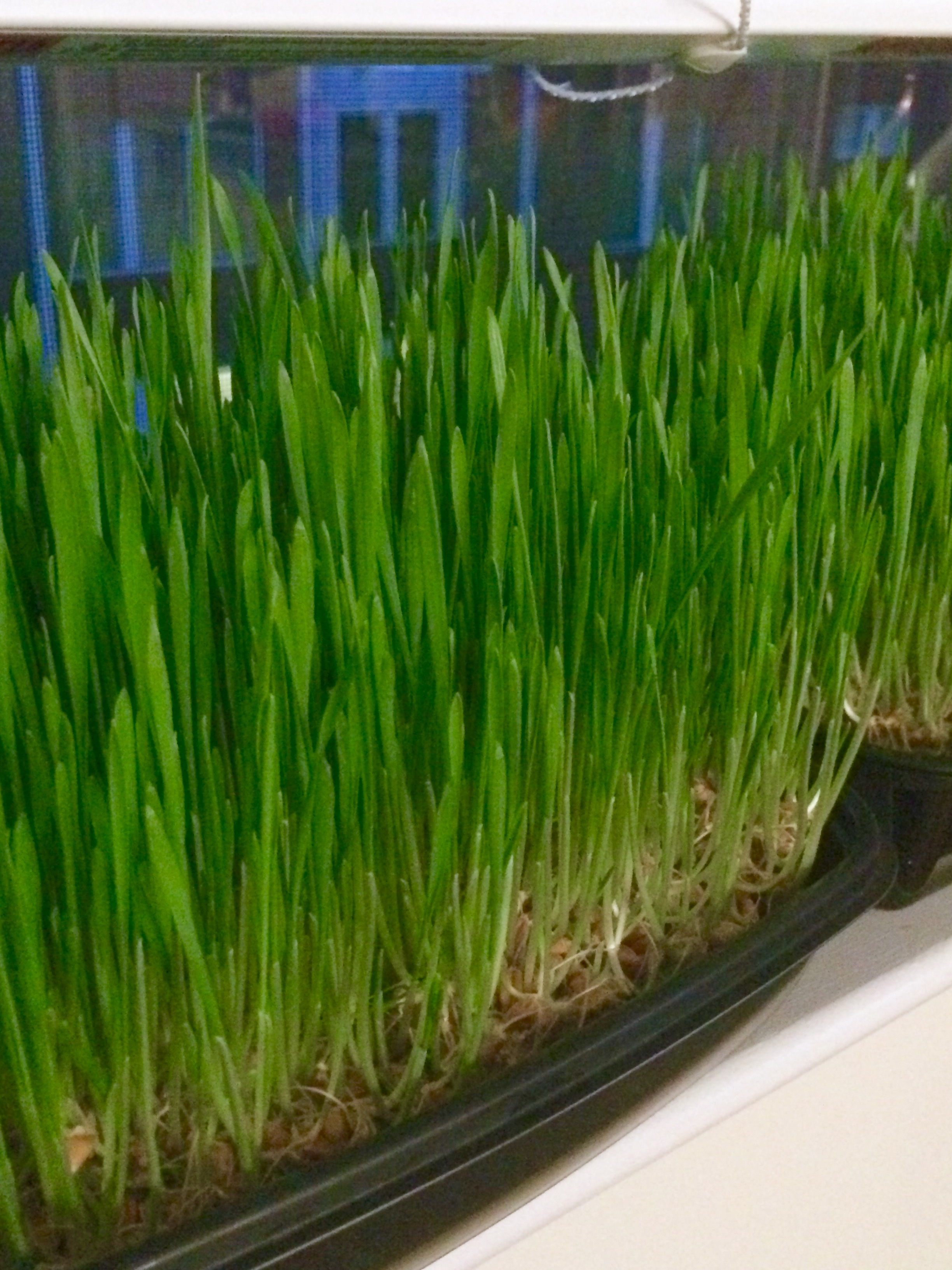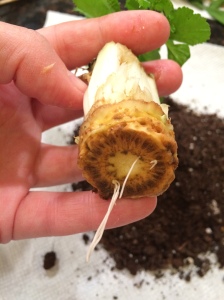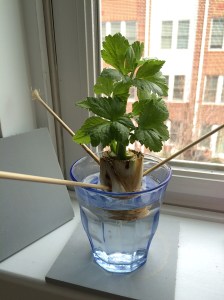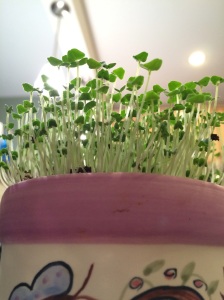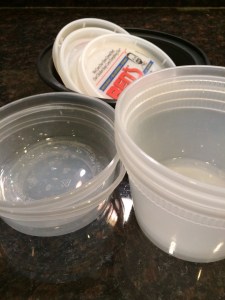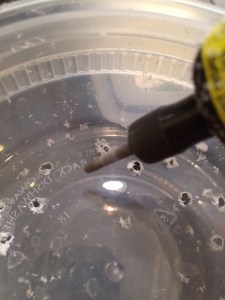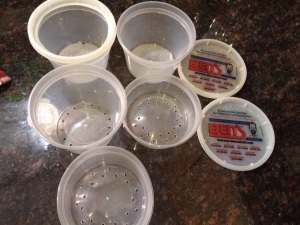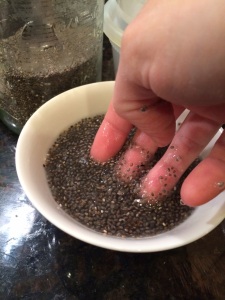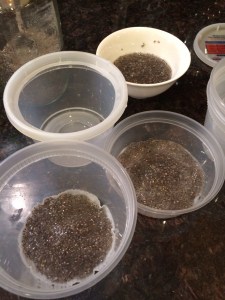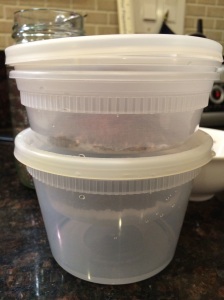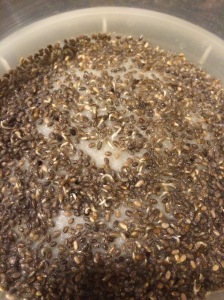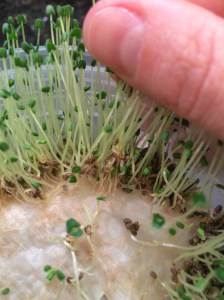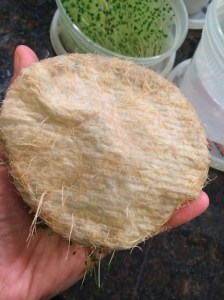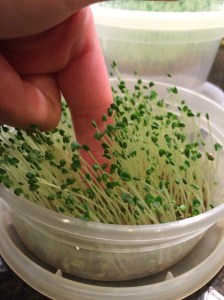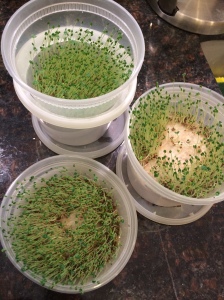Want to make your buns super happy? Grow some fresh grass at home in under a week!
Equipment:
– Wheatgrass. (Buy in bulk for best price, usually under $2/pound. Look for hard winter wheat or wheat berries.)
– Clean containers of the same size that will stack into one another, plus one extra. (I like round plastic takeout style containers because they’re easy to clean and move around.)
– Potting mix. (Nothing special. Just a handful or two per container.)
– Heavy plastic. (Thickness of a ziplock bag, think. Anything will work, recycle if you can!)
– Water & love
1) Soak about 1/2 cup of wheatgrass overnight. This will wind up making about 2-3 containers worth, depending on the size of your container. I started with (L-R) buckwheat, wheatgrass, and barley. (We’ll ignore the barley and buckwheat for now. I don’t think the buckwheat sprouted properly, but the stuff I used was VERY old.)

2) The next day, prepare your containers. I added about 3/4″ of potting mix to the clean containers, and then pressed it down using the other container. This part is important! You want to create a good base for your roots. (Wheatgrass doesn’t actually need a growing medium, but it takes way longer without.)

3) Sprinkle your soaked seeds over the prepared potting mix so you don’t see any mix, but try to get just a single layer. Water each container so the mix is saturated.

4) Cut a piece of plastic wide enough to cover your container, with an additional 1″-2″ all the way around. Place a piece of plastic on top of each layer of seeds, and put another container on top. Don’t stack more than three containers. The final layer should be an empty container with a gentle weight, like a jar.

4) No need to water, and no peeking! (Well, maybe just this once.) The seeds will germinate very quickly in the dark. Left photos are the day after planting, right is two days after planting, and time to move to the next step.
 5) Unstack and put the containers in a box that you can easily close. I always throw a towel on top to keep the top and sides of the box closed. You want to block out as much light as possible. Leave the plastic lightly on top of the containers. Remove the plastic after the second day to avoid mold.
5) Unstack and put the containers in a box that you can easily close. I always throw a towel on top to keep the top and sides of the box closed. You want to block out as much light as possible. Leave the plastic lightly on top of the containers. Remove the plastic after the second day to avoid mold.

6) In about two days, you’ll have yellow grass about 3″-4″ tall. Take it out, put it in the sun (or even just indoor light), and it will continue to turn green and grow. Water just a bit every day from now on.

7) Once the grass has reached 5″-6″ in another day, you’re ready to serve! Total time: 6-7 days.

8) You can let him or her nibble on their own, or trim it and serve. Buns will eat down to the white part, where it will naturally regrow. You can get two good grow cycles, maaaaaybe three. Growth does slow down after the second trim, so I usually just toss the whole thing into the compost and start over. If you want to trim it yourself, cut at that same point.





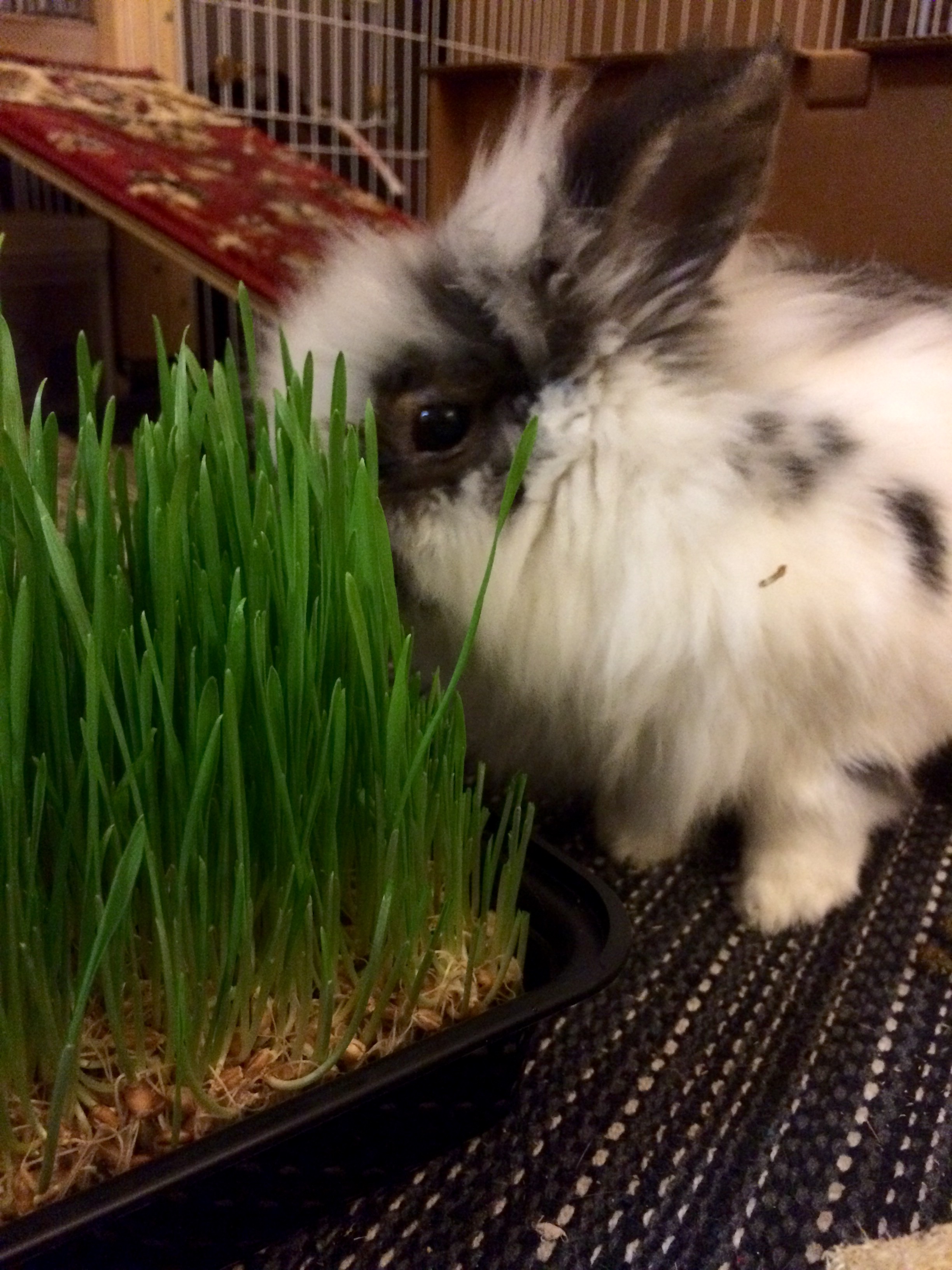 sprouts.
sprouts. 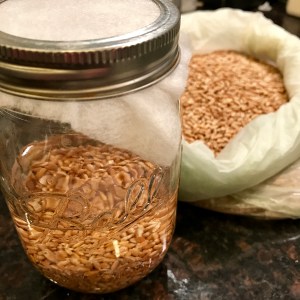
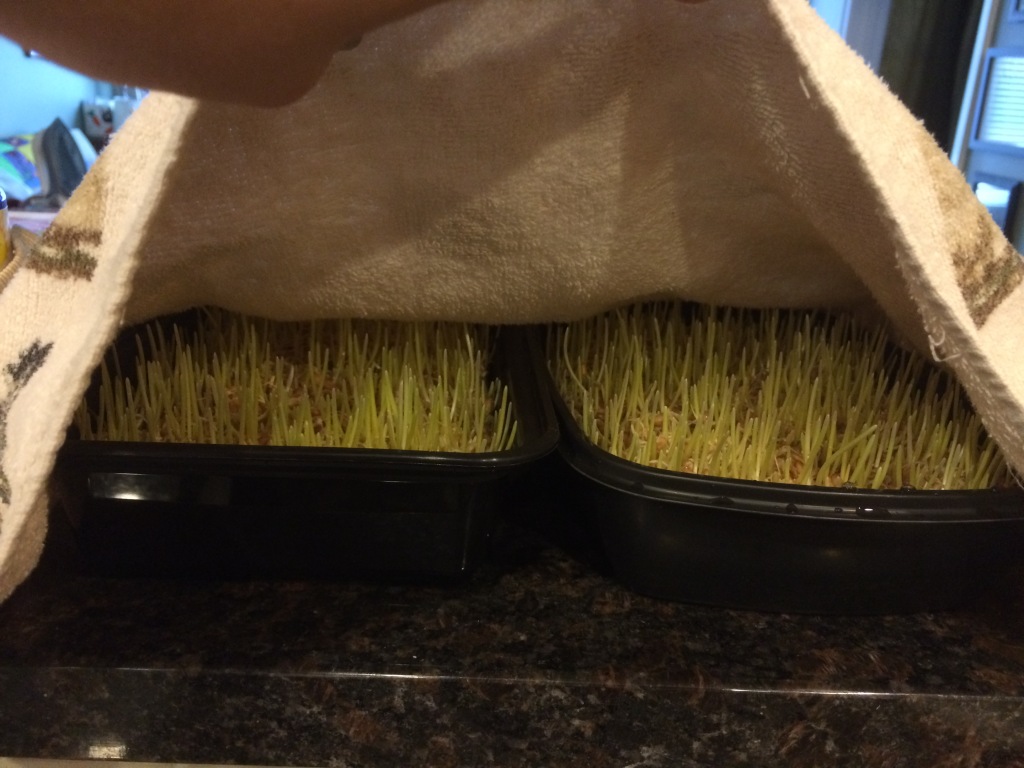
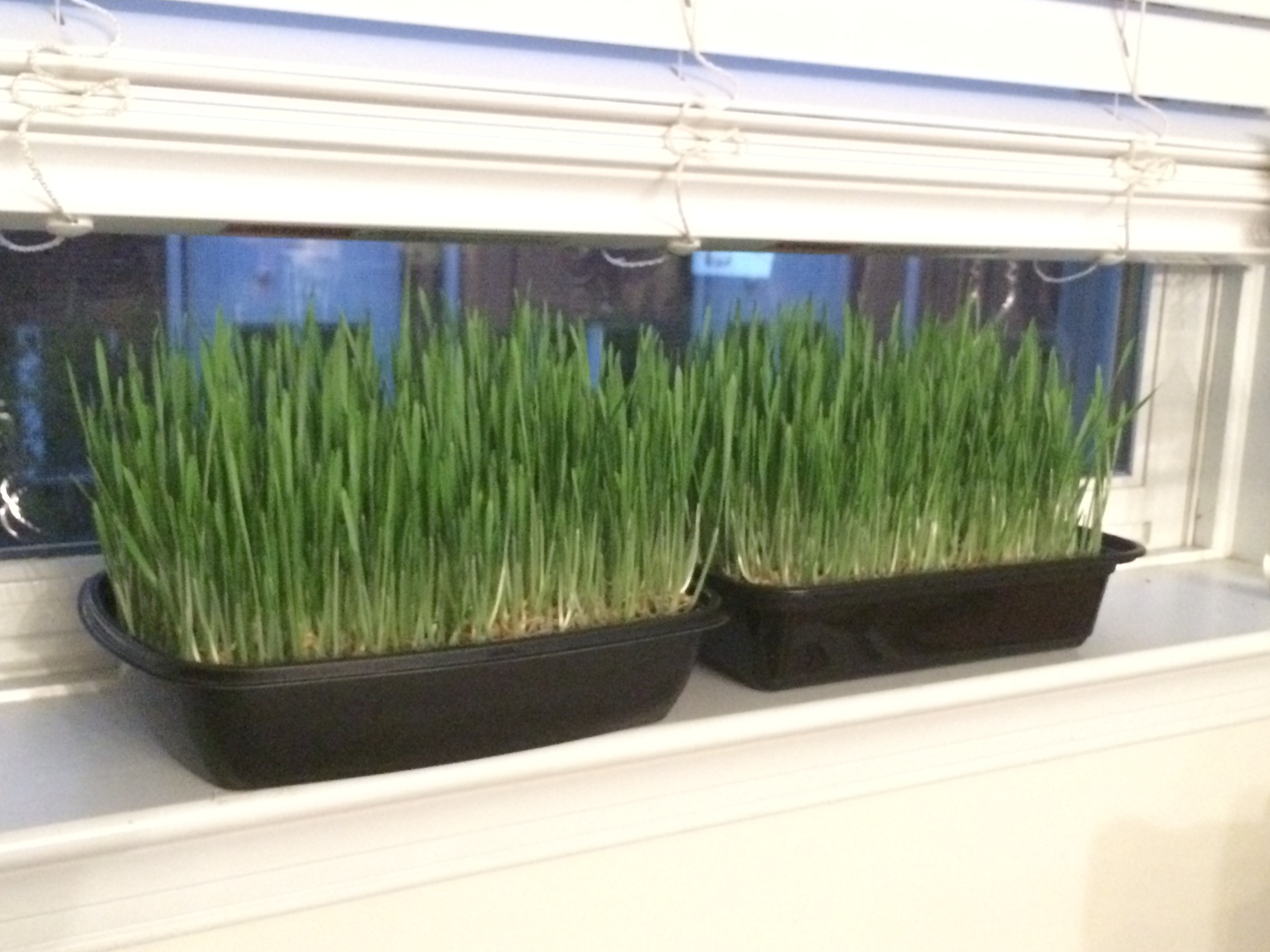
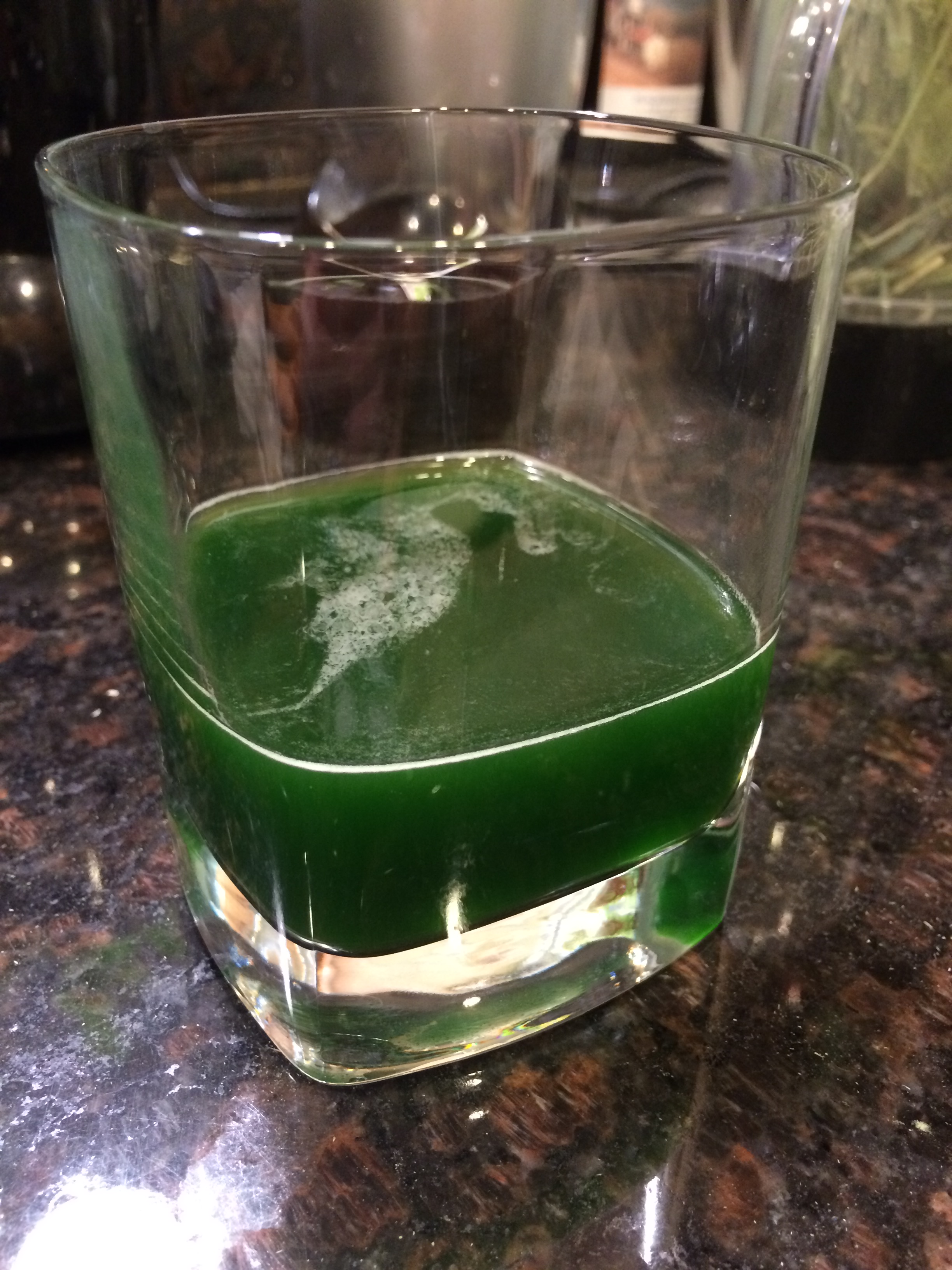 For human use, put it through a juicer and drink. I didn’t want to do that, as my juicer is heavy and a pain to clean, so I just cut a portion (about 1″ x 1″ square) and snipped it into small pieces. Into my Magic Bullet blender with the flat blade and some water, and blend, blend, blend! As soon as you think you’re done, blend for another few seconds. When you have green water and green mash, strain into a glass and press the pulp to get out all of the liquid.
For human use, put it through a juicer and drink. I didn’t want to do that, as my juicer is heavy and a pain to clean, so I just cut a portion (about 1″ x 1″ square) and snipped it into small pieces. Into my Magic Bullet blender with the flat blade and some water, and blend, blend, blend! As soon as you think you’re done, blend for another few seconds. When you have green water and green mash, strain into a glass and press the pulp to get out all of the liquid.